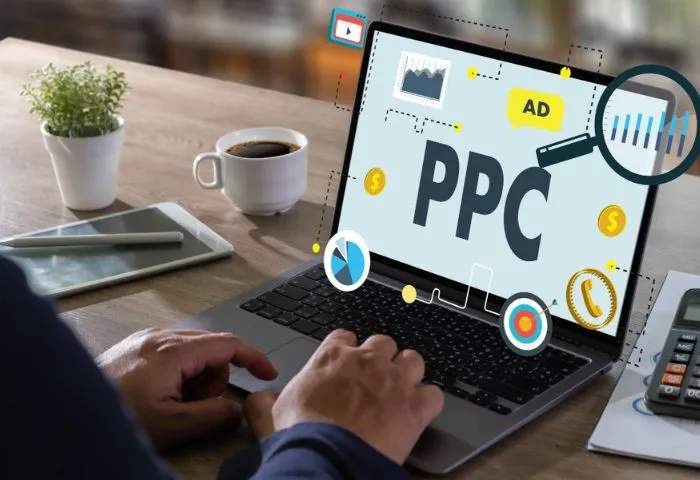In the dynamic world of digital marketing, one key player continually stands out in the effort to drive website traffic – Pay-Per-Click (PPC) advertising. With its precision, targeting capabilities, and immediate results, PPC has become a cornerstone of online marketing strategies. In this blog, we'll delve into the world of PPC advertising, uncovering its pivotal role in increasing website traffic, and how it can revolutionize your digital marketing efforts.
Understanding PPC Advertising
First things first, let's get familiar with what PPC advertising really is. PPC is an online advertising model where advertisers pay a fee each time their ad is clicked. Essentially, it's a way of buying website visits rather than attempting to earn those visits organically. These ads can appear on various platforms, with Google Ads and social media platforms like Facebook and Instagram being popular choices.
Immediate Results and Increased Visibility
One of the most significant advantages of PPC advertising is its ability to deliver immediate results. As soon as your campaign is up and running, your ads are visible to your target audience. This is in stark contrast to SEO, which takes time to build and earn organic traffic. With PPC, you can quickly boost your online visibility and direct potential customers to your website.
Laser-Sharp Targeting
PPC advertising also excels in its targeting capabilities. You can define your audience by factors like location, keywords, devices, and even the time of day your ads are displayed. This level of precision ensures that your ads are seen by the right people, increasing the chances of conversions.
Control Over Budget and Spending
Worried about overspending? Fear not. With PPC, you have full control over your budget. You can set daily or monthly spending limits, making it a flexible and cost-effective advertising option. Plus, you only pay when someone clicks on your ad, which means you're not charged for mere impressions.
Measurable and Trackable Results
Another standout feature of PPC advertising is its measurability. It allows you to track every aspect of your campaign, from the number of clicks and impressions to conversion rates and the cost per conversion. This data-driven approach helps you make informed decisions and optimize your campaign for better results.
Enhancing Brand Awareness
While the primary goal of PPC is to drive traffic and conversions, it's also a powerful tool for boosting brand awareness. Even if users don't click on your ad, the mere exposure to your brand can have a significant impact. This is especially valuable in the early stages of building brand recognition.
Adaptability and Quick Adjustments
In the world of digital marketing, flexibility is crucial. With PPC, you can make instant adjustments to your campaigns. If certain keywords or ads aren't performing as expected, you can modify them on the fly. This adaptability ensures your campaign is always optimized for the best results.
Overcoming Competitors
PPC advertising allows you to bid on keywords and ad placements. By bidding strategically, you can surpass your competitors and secure the top spot on search engine result pages. This can be a game-changer in highly competitive industries.
The Downsides of PPC
While PPC advertising offers numerous advantages, it's not without its challenges. The costs can add up, and if not managed properly, you might spend more than you earn. Additionally, running a successful PPC campaign requires knowledge and ongoing effort, making it essential to monitor and adjust your strategy regularly.
The Road to Successful PPC Advertising
So, how can you harness the power of PPC advertising effectively to drive substantial website traffic? Here are some steps to get you started:
1. Define Your Goals: Begin by setting clear objectives for your PPC campaign. Do you want to increase website visits, boost sales, or generate leads? Knowing your goals will guide your strategy.
2. Keyword Research: Conduct thorough keyword research to identify the terms and phrases your target audience is using to find products or services similar to yours.
3. Craft Compelling Ad Copy: Your ad copy should be engaging, relevant, and include your chosen keywords. A well-crafted ad can significantly impact click-through rates.
4. Landing Page Optimization: Ensure that the landing page your ad directs users to is tailored to match the ad's message and provides a seamless user experience.
5. Monitor and Adjust: Constantly monitor your campaign's performance and make adjustments as needed. This includes tweaking keywords, ad copy, and bidding strategies.
6. A/B Testing: Experiment with different ad variations to identify what works best. A/B testing can help you refine your campaigns for maximum effectiveness.
7. Budget Control: Keep a close eye on your budget. Set daily or monthly limits to avoid overspending.
8. Conversion Tracking: Implement conversion tracking to measure the success of your campaigns. This data will be invaluable for making improvements.
9. Seek Professional Guidance: If PPC advertising seems daunting, don't hesitate to seek the help of professionals who specialize in managing PPC campaigns. They can ensure your investment is well-spent.
In Conclusion
PPC advertising is a dynamic and effective way to drive website traffic, increase visibility, and boost conversions. Its immediacy, precision, and flexibility make it a valuable addition to any digital marketing strategy. However, to make the most of your PPC campaigns, it's crucial to approach them strategically, set clear goals, and continually fine-tune your approach. By doing so, you can unlock the full potential of PPC advertising and watch your website traffic soar.

